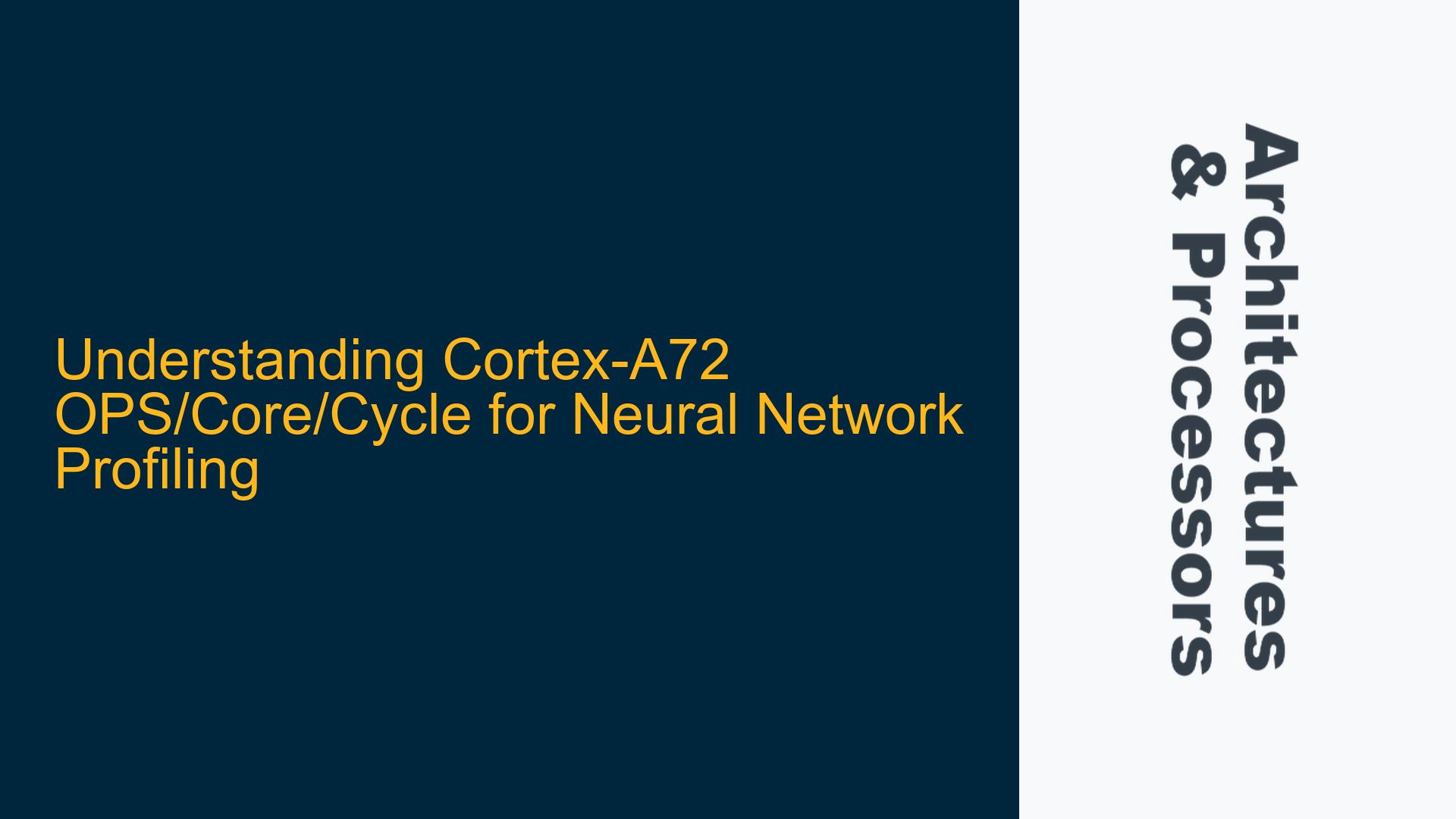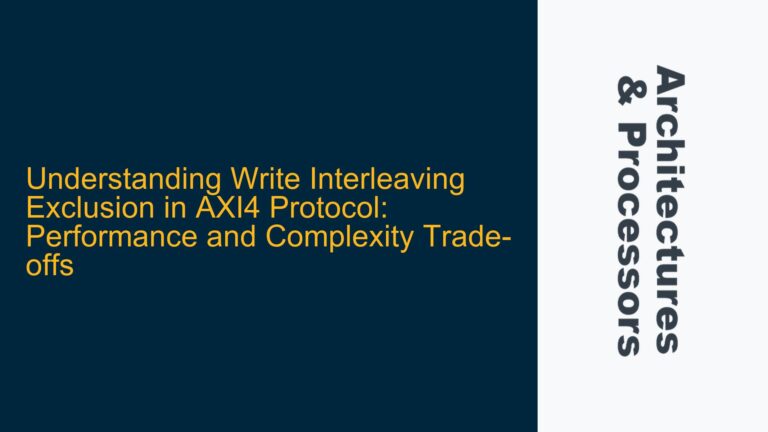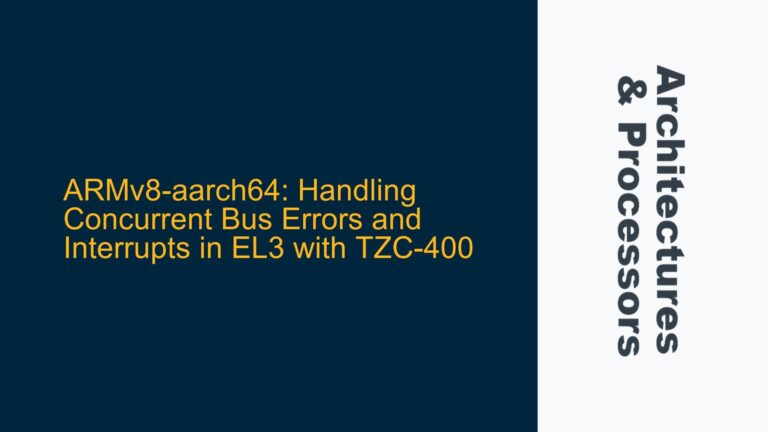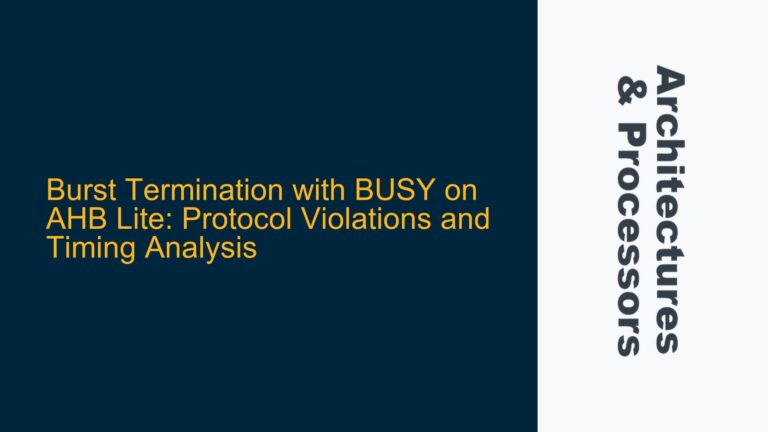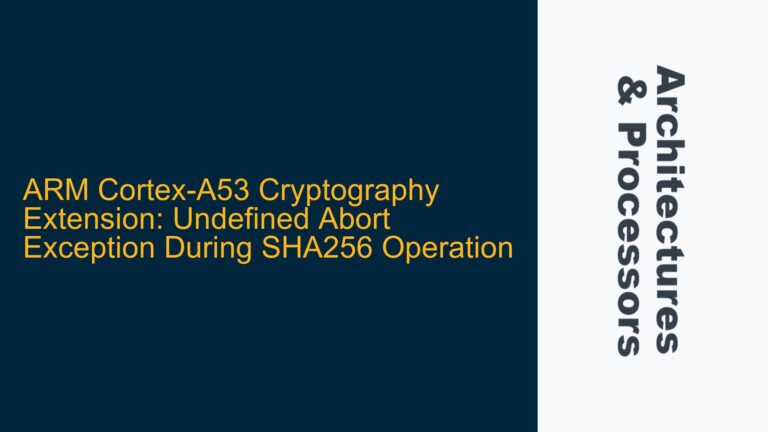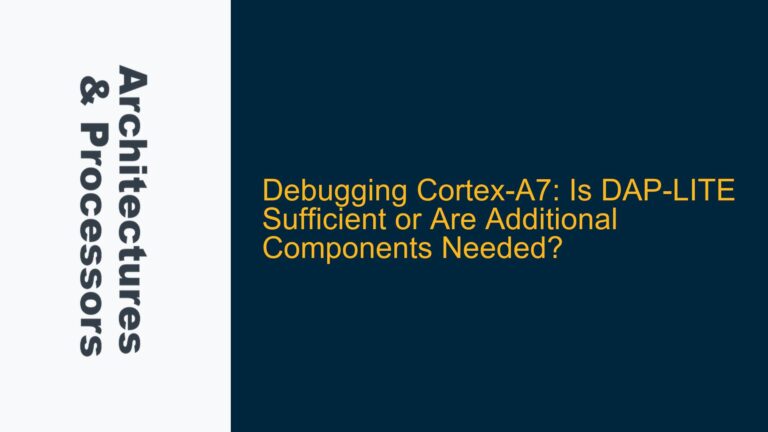Cortex-A72 Instruction Throughput and Pipeline Utilization
The Cortex-A72 is a high-performance ARM processor core designed for advanced applications, including neural network inference and training. To accurately profile neural network performance on the Cortex-A72, understanding its operations per second (OPS), operations per core, and operations per cycle is critical. The Cortex-A72 features a sophisticated microarchitecture with multiple execution pipelines, out-of-order execution, and advanced branch prediction. These features enable high instruction throughput, but they also introduce complexity when estimating performance metrics like OPS/core/cycle.
The Cortex-A72 Software Optimization Guide provides detailed information about instruction execution latency, throughput, and pipeline utilization. Execution latency refers to the number of cycles required to complete a single instruction, while execution throughput indicates how many instructions of the same type can be executed per cycle when multiple instructions are issued. Pipeline utilization describes how instructions are distributed across the Cortex-A72’s execution units, such as the integer ALUs, floating-point units, and load/store pipelines.
For neural network workloads, the most relevant execution units are the floating-point pipelines, as these handle the bulk of the computations. The Cortex-A72 supports ARMv8-A instructions, including Advanced SIMD (NEON) and floating-point operations, which are heavily used in neural network inference. The NEON unit can process multiple data elements in parallel, making it highly efficient for matrix multiplications and convolutions, which are foundational operations in neural networks.
To determine the OPS/core/cycle for a specific neural network workload, you must analyze the instruction mix and how it maps to the Cortex-A72’s execution pipelines. For example, a workload dominated by floating-point multiply-accumulate (FMAC) operations will have different throughput characteristics compared to a workload with a high proportion of load/store operations. The Cortex-A72 Software Optimization Guide provides tables detailing the latency and throughput for each instruction type, enabling you to calculate the theoretical maximum OPS/core/cycle for your workload.
Factors Affecting Cortex-A72 Performance in Neural Network Workloads
Several factors can influence the Cortex-A72’s performance in neural network workloads, including instruction mix, data dependencies, cache utilization, and memory bandwidth. The instruction mix determines how effectively the Cortex-A72’s execution pipelines are utilized. For example, a workload with a balanced mix of integer, floating-point, and load/store operations can achieve higher throughput than a workload dominated by a single instruction type. However, data dependencies between instructions can limit parallelism and reduce throughput. The Cortex-A72’s out-of-order execution engine mitigates this by reordering instructions to maximize pipeline utilization, but complex dependencies can still impact performance.
Cache utilization is another critical factor. The Cortex-A72 features a multi-level cache hierarchy, including L1 and L2 caches, which reduce memory access latency. Efficient use of the cache is essential for maintaining high throughput, especially in neural network workloads that process large datasets. If the working set exceeds the cache capacity, frequent cache misses will occur, increasing memory access latency and reducing overall performance. Optimizing data layout and access patterns can improve cache utilization and minimize misses.
Memory bandwidth also plays a significant role, particularly in workloads with high data movement requirements. The Cortex-A72’s memory subsystem must be able to keep up with the data demands of the execution pipelines. Insufficient memory bandwidth can create bottlenecks, limiting the processor’s ability to achieve its theoretical peak performance. Techniques such as prefetching and data compression can help mitigate memory bandwidth limitations.
Finally, the Cortex-A72’s power management features can impact performance. Dynamic voltage and frequency scaling (DVFS) adjusts the processor’s clock speed and voltage based on workload demands. While DVFS improves energy efficiency, it can also introduce variability in performance. Understanding how DVFS affects the Cortex-A72’s clock speed and execution throughput is essential for accurate performance profiling.
Profiling Cortex-A72 Performance for Neural Network Workloads
To profile neural network performance on the Cortex-A72, you must first identify the key operations in your workload and map them to the Cortex-A72’s execution pipelines. Start by analyzing the instruction mix and determining the proportion of floating-point, integer, and load/store operations. Use the Cortex-A72 Software Optimization Guide to obtain the latency and throughput for each instruction type. This information will allow you to calculate the theoretical maximum OPS/core/cycle for your workload.
Next, measure the actual performance of your workload using performance counters. The Cortex-A72 provides a set of performance monitoring units (PMUs) that can track metrics such as instructions retired, cache misses, and branch mispredictions. By correlating these metrics with the theoretical performance, you can identify bottlenecks and areas for optimization. For example, a high number of cache misses may indicate inefficient data access patterns, while a high rate of branch mispredictions may suggest opportunities for improving branch prediction accuracy.
Optimizing cache utilization is critical for achieving high performance. Analyze your workload’s data access patterns and adjust the data layout to improve spatial and temporal locality. Techniques such as loop unrolling, data prefetching, and cache blocking can help reduce cache misses and improve throughput. Additionally, consider using ARM’s cache management instructions, such as Data Cache Clean and Invalidate (DC CIVAC), to ensure cache coherency in multi-core systems.
Memory bandwidth optimization is another important consideration. If your workload is memory-bound, explore techniques to reduce data movement, such as data compression or quantization. For example, using lower-precision data types (e.g., INT8 instead of FP32) can significantly reduce memory bandwidth requirements while maintaining acceptable accuracy for neural network inference. Additionally, ensure that your workload’s memory access patterns are optimized for the Cortex-A72’s memory subsystem, taking advantage of features such as burst mode and interleaving.
Finally, consider the impact of power management on performance. If your workload is sensitive to clock speed variations, you may need to disable DVFS or adjust the frequency scaling parameters. Alternatively, you can profile your workload at different clock speeds to understand how performance scales with frequency. This information can help you make informed decisions about power-performance trade-offs.
In conclusion, profiling neural network performance on the Cortex-A72 requires a deep understanding of the processor’s microarchitecture and execution pipelines. By analyzing the instruction mix, optimizing cache and memory utilization, and leveraging performance counters, you can accurately measure and optimize OPS/core/cycle for your workload. The Cortex-A72 Software Optimization Guide is an invaluable resource for this process, providing detailed insights into instruction latency, throughput, and pipeline utilization. With careful analysis and optimization, you can achieve high performance and efficiency for neural network workloads on the Cortex-A72.
